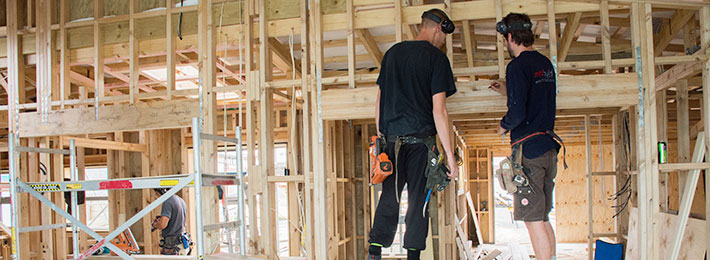Construction Pipeline Report 2016
29 Aug 2016, Building and housing, Featured, Industry Updates

$200 billion worth of building activity forecast nationally over the next six years
BRANZ and Pacifecon – a construction industry data analysis specialist – produce the National Construction Pipeline Report annually based on current and forecast data. The report is commissioned by MBIE and was originally conceived in 2013 by the Productivity Partnership.
Data is collected in four regions, Auckland, Canterbury, Waikato/Bay of Plenty and Wellington, with aggregated data provided for the rest of New Zealand. This year, a first-time companion report – Future Demand for Construction Workers – forecasts the numbers of employees in construction-related occupations that New Zealand will need until the end of 2021 to meet projected levels in the pipeline report.
Additionally, an interactive web tool, which uses information from both reports, enables anyone to search the projections for construction investment and occupations to the end of 2021.
Target audience
Sector participants across all types of construction, product manufacturers and aligned suppliers, as well as Industry Training Organisations (ITO’s) will be interested. The aim is to provide everyone with a clear pipeline of building and construction work and occupations to help inform decisions around investment in new materials, equipment, recruitment and training and to improve the sector’s ability to respond to the cyclical nature of the construction sector, while improving productivity.
Stand-out findings
There are three standouts in the report; a $200bn injection into the economy over the next six years, the growth in residential housing in Auckland, and two new accelerating regions of Waikato and BoP.
Forecasts are also showing the move towards multi-unit type consents such as apartments and townhouses. In 2013, the outlook for these types of consents was around 16%, but by 2022 we expect them to represent 40% of all consents nationally.
Strongest regions
Residential building growth in Auckland accounts for more than half of New Zealand’s construction growth and the expansion is spreading to other regions. Auckland will add 94,200 new dwellings by the end of 2021 but Waikato/BoP are experiencing their own construction booms with 30,300 new dwellings expected in the same period.
Both regions have emerged as places to watch, with a 26% growth in consents during 2015 for Waikato and 35% for the BoP. This combined region will take over as the second-largest area after the Canterbury residential rebuild tails off.
National construction activity has sustained growth averaging 7% per year since 2011, and is forecast to grow at this rate to a peak of $37bn in 2017, remaining above 2015 levels until 2021.
Stand-out points for occupation
Building and construction was the largest contributor to annual employment growth last year, with 27,500 more people employed nationally.
Employment in construction-related occupations is much greater than in the construction industry, because many other industries employ people with construction skills. Total employment in construction-related occupations is projected to grow by around 49,000 between 2015 and 2021.
Occupation growth
Examples of construction-related occupations that are expected to experience the largest growth to 2021 are electricians (14%), plumbers (13%) and civil engineering professionals (11%).
Go to www.mbie.govt.nz to download the full report and access the interactive web tool.
Register to earn LBP Points Sign in



